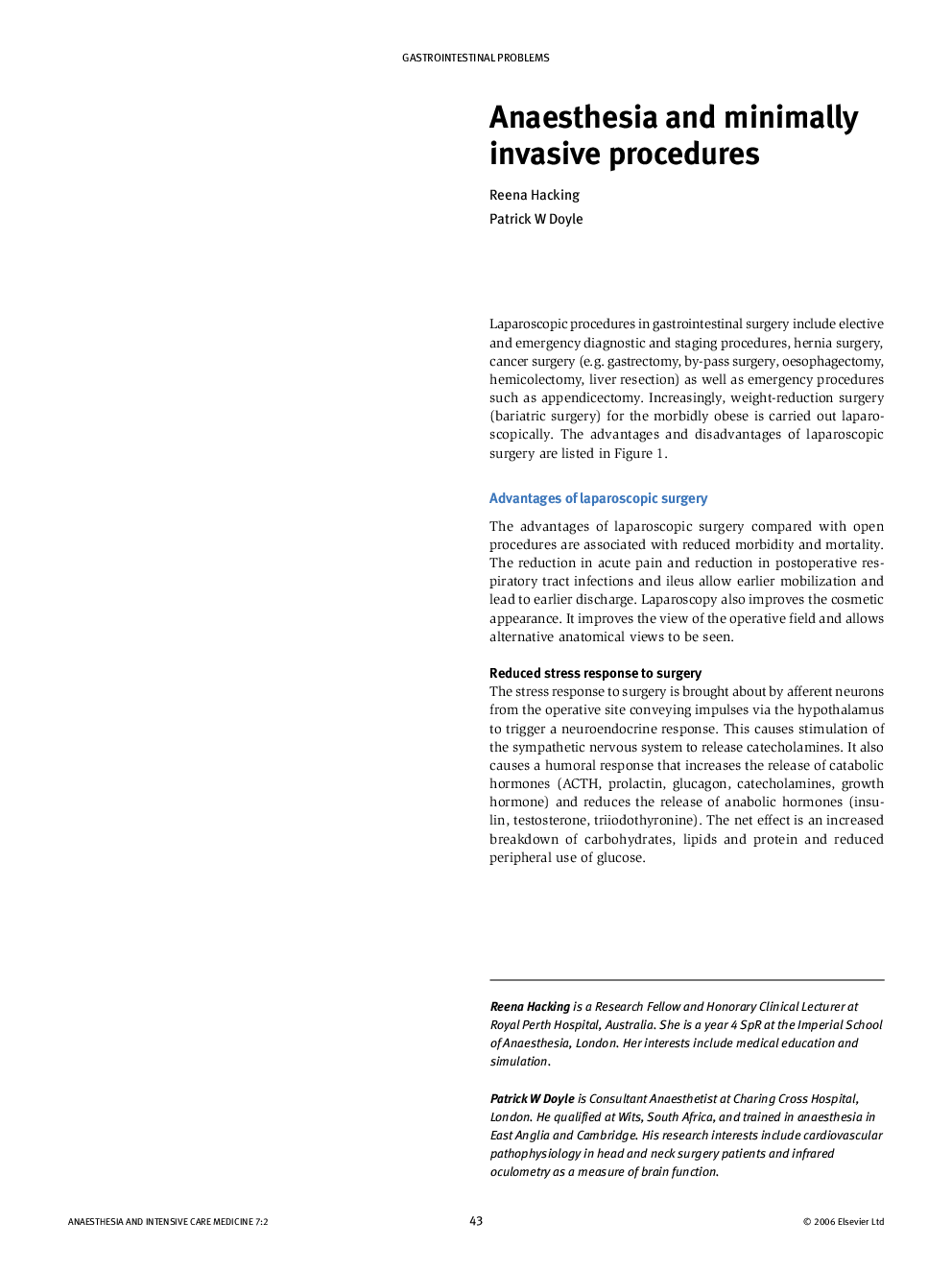| Article ID | Journal | Published Year | Pages | File Type |
|---|---|---|---|---|
| 2743960 | Anaesthesia & Intensive Care Medicine | 2006 | 4 Pages |
Almost all forms of intra-abdominal surgery can be performed via the laparoscopic route. As surgeons become more experienced in laparoscopic techniques, more complex surgery is performed on patients with multiple co-morbidities. The advantages of laparoscopic surgery include: reduced stress response to surgery, reduced analgesic requirements, improved postoperative respiratory function, reduced recovery time, improved cosmetic appearance and improved visualization of the operative field. These must be weighed against the disadvantages, which are physiological consequences of pneumoperitoneum, raised intra-abdominal pressure, operative position of the patient, technical difficulty of the procedure, unsuspected visceral or vascular injury and difficulty in evaluating the amount of blood loss. The anaesthetic technique should reflect the type of surgery and the medical condition of the patient. Preoperative assessment will reflect the pre-morbid status of the patient. Special investigation may be required for those with cardiorespiratory disease. These are often the patients in whom a pneumoperitoneum is most dangerous and yet they are often the patients referred for laparoscopic surgery. Invasive intraoperative monitoring may be required. The most difficult part of the anaesthetic is usually at insufflation of the pneumoperitoneum, when profound cardiac and respiratory changes can take place. Generally attention should be paid to fluid balance, ventilation to counteract high intra-abdominal pressures, cardiac depression and postoperative deep venous thrombosis prophylaxis.Increasingly surgery in the obese is carried out via laparoscopic procedures. All the problems of the morbidly obese patients must be considered including postoperative care.
